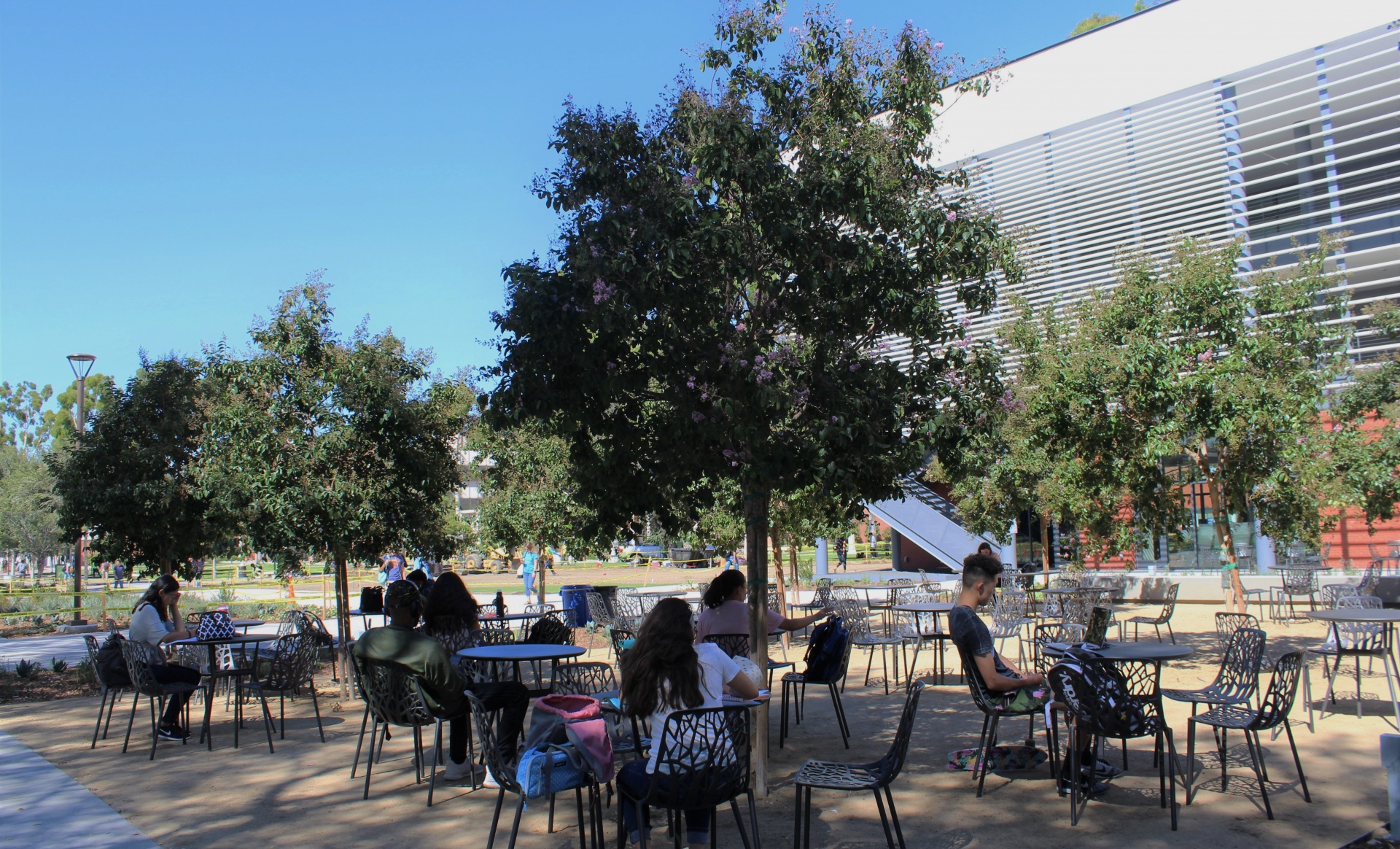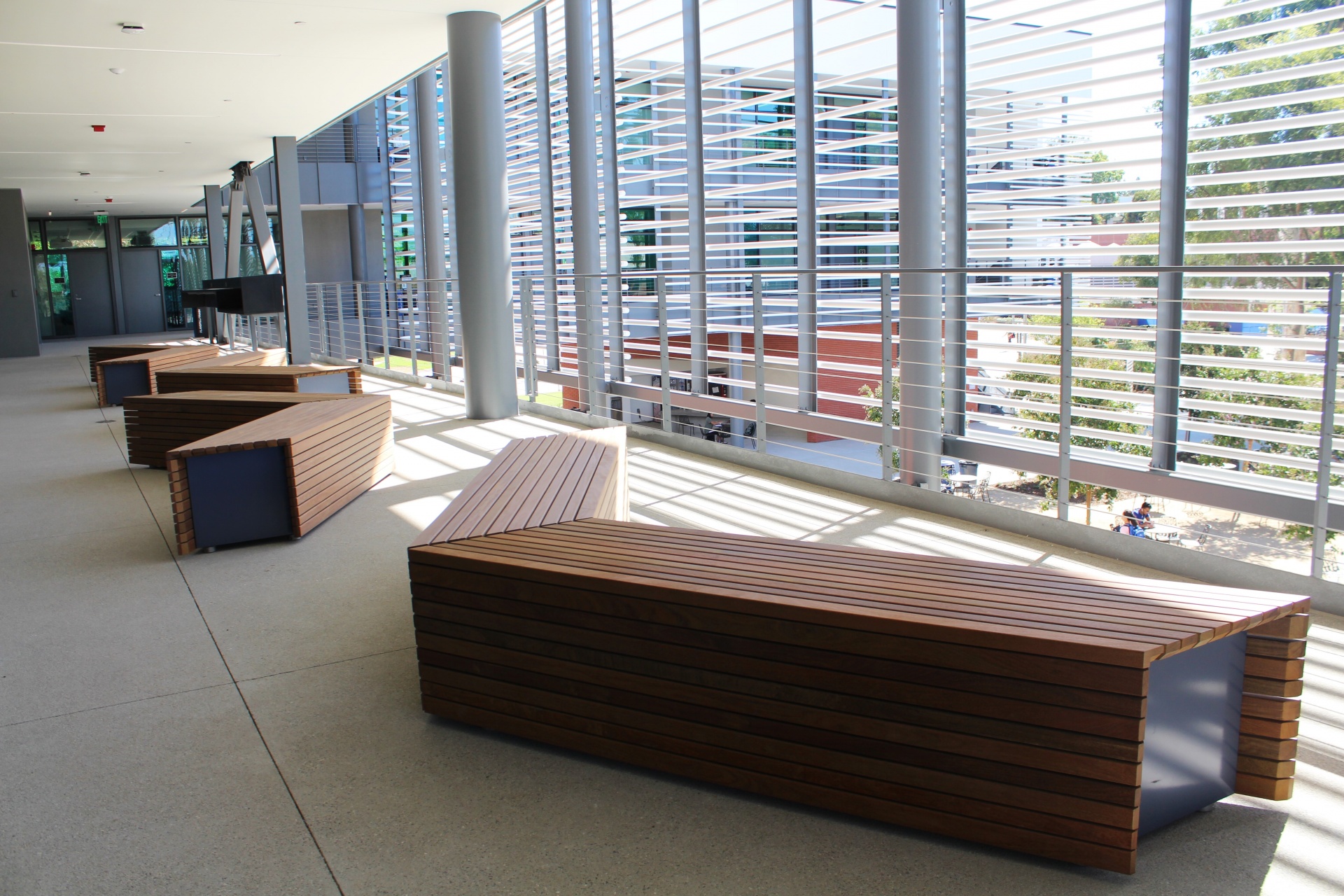CCPE Building Becomes First Net Zero Energy Classroom Building in CSU
Students enrolled in the College of Continuing and Professional Education (CCPE) this fall are the first to attend classes in the college’s new state-of-the-art net zero energy classroom building, the first of its kind in the California State University system. CCPE classes, which have historically been held in a variety of locations both on and off campus, are now held in a centralized location, allowing CCPE students to become more integrated into the campus community.
Construction of the 20 classroom building was completed this summer. The project’s design utilizes several energy saving and green building features and allows each classroom setting to be customized to suit a variety of academic needs.

To reach net zero energy consumption, solar panels will be installed on the CCPE building’s roof and canopy. The solar panels will provide enough energy to offset all energy consumed by the building.
ZGF Architects designed the building to achieve a LEED Platinum rating, the highest level of international certification developed by the U.S. Green Building Council. LEED certification recognizes a building’s energy and water saving features, reduced carbon footprint, and environmentally sustainable design elements.
The CCPE building design maximizes energy savings by employing manually operable windows and shades on two sides of every classroom to encourage the use of natural daylighting and reduce solar heat gain. If additional lighting is needed, overhead LED lights linked to occupancy sensors are incorporated, allowing lights to be shut off when classrooms are not in use.
A radiant heating and cooling system has also been included. This system uses pipes in the floor to hold either hot or cold water, heating or cooling the rest of the classroom over time, as opposed to a traditional heating/cooling system that uses more energy to blow hot or cold air into a room.
For further customization, furniture in CCPE classrooms is on wheels, permitting each classroom to create a setting unique to the coursework.
“We have designed the building to provide an experience for students and faculty to have a high level of control for the classroom environment depending on the curriculum and time of the year,” ZGF architect Amanda Snelson said. “The building should lend itself to a healthier, comfortable and productive environment with the latest classroom technology and passive energy sources.”
Despite the building’s energy saving design, to achieve the highest level of energy conservation possible, students and professors will have to interact appropriately with the building’s unique features.
“These interactions include turning on ceiling fans and opening windows when conditions warrant it, keeping voices at a conversation level in public spaces to promote open windows in classrooms, dressing appropriately for the natural weather outside, and turning off or unplugging devices when not in use,” Construction Project Manager Lisa Salgado said.
The CCPE building’s net zero energy consumption will contribute directly to goals laid out in the university’s Climate Action Plan, which states that the university will achieve climate neutrality by reducing campus greenhouse gas emission to zero by 2030. About a quarter of the campus’ greenhouse gas emissions come from purchased electricity. The new CCPE building won’t contribute to these emissions because it will run solely on renewable energy.

By introducing new standards for energy efficient and sustainable building designs, the CCPE building will positively impact California’s environmental health, but it will more immediately affect the CCPE students who previously didn’t have a building to call their own.
The building will not truly be net zero until the solar panels are installed and operable, which is expected to take place in October. Until then, most of the building’s energy will be pulled from the utility grid and the campus’ central plant.






